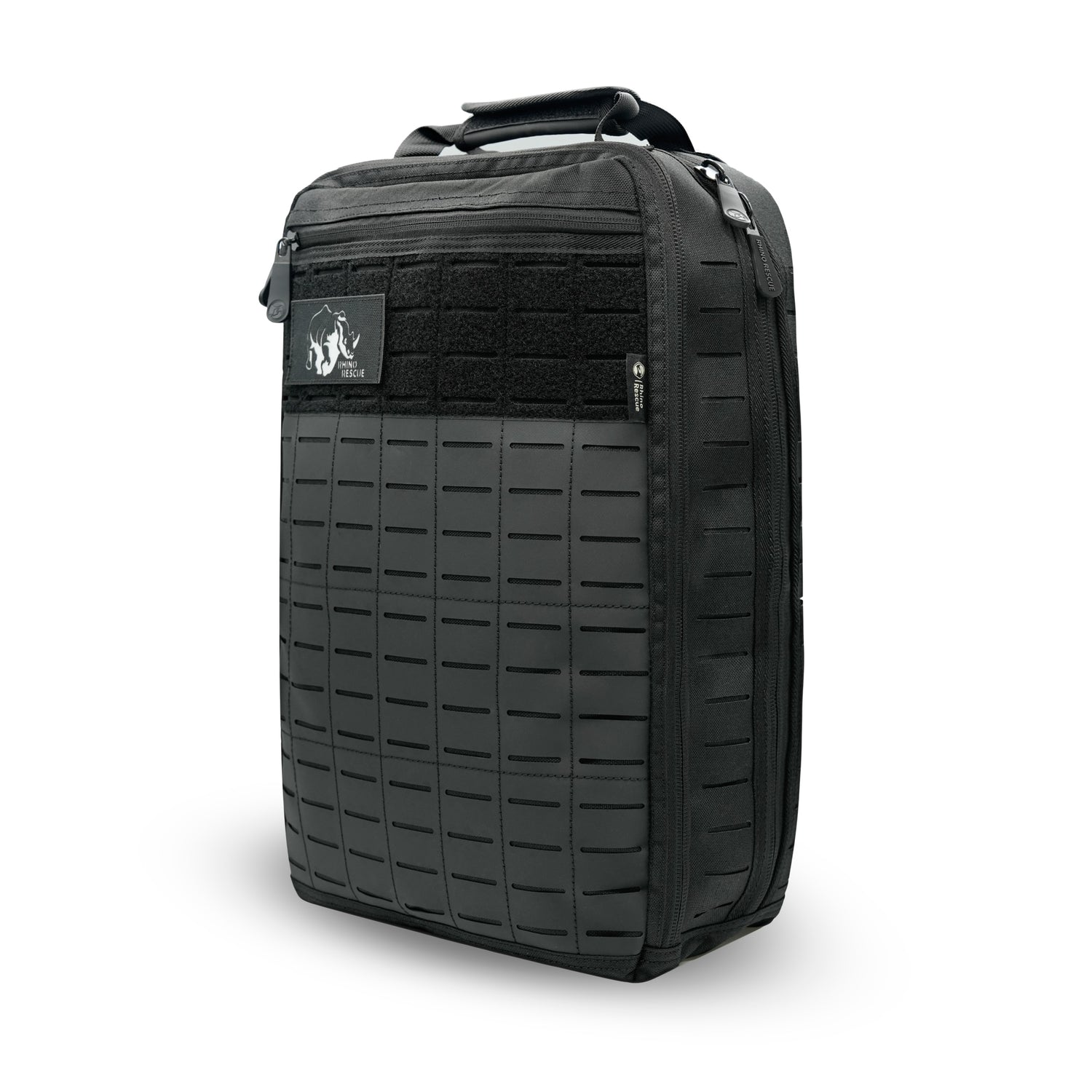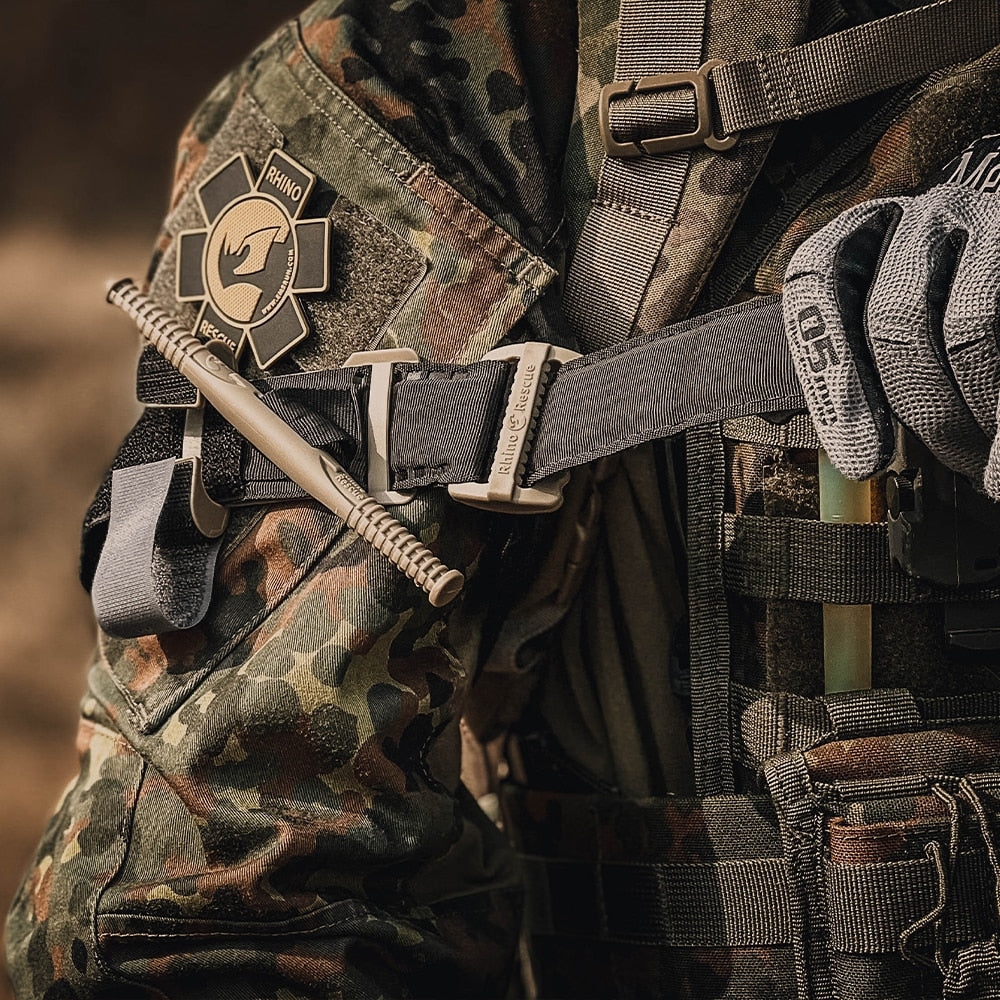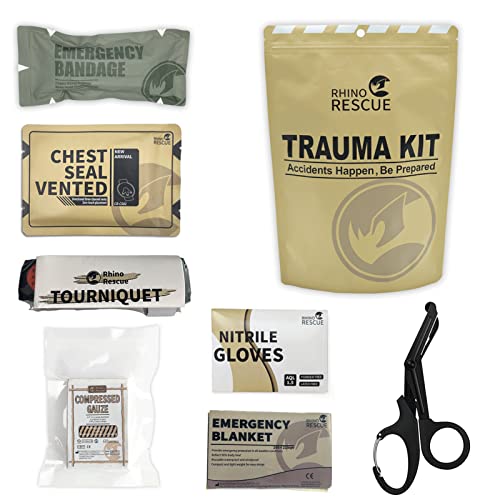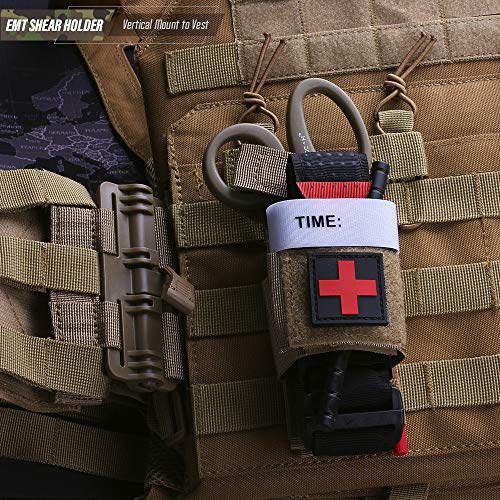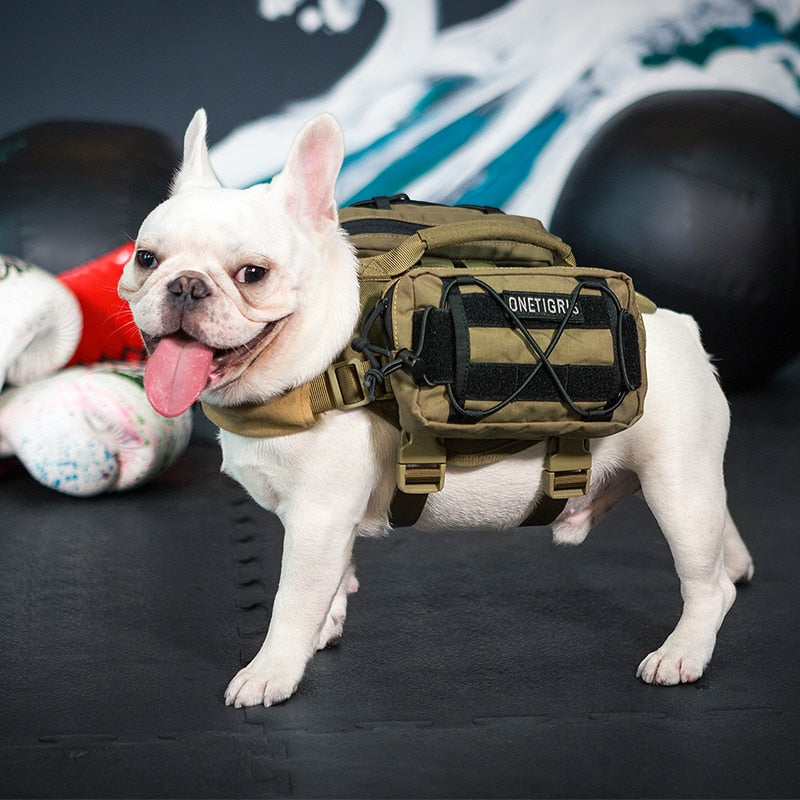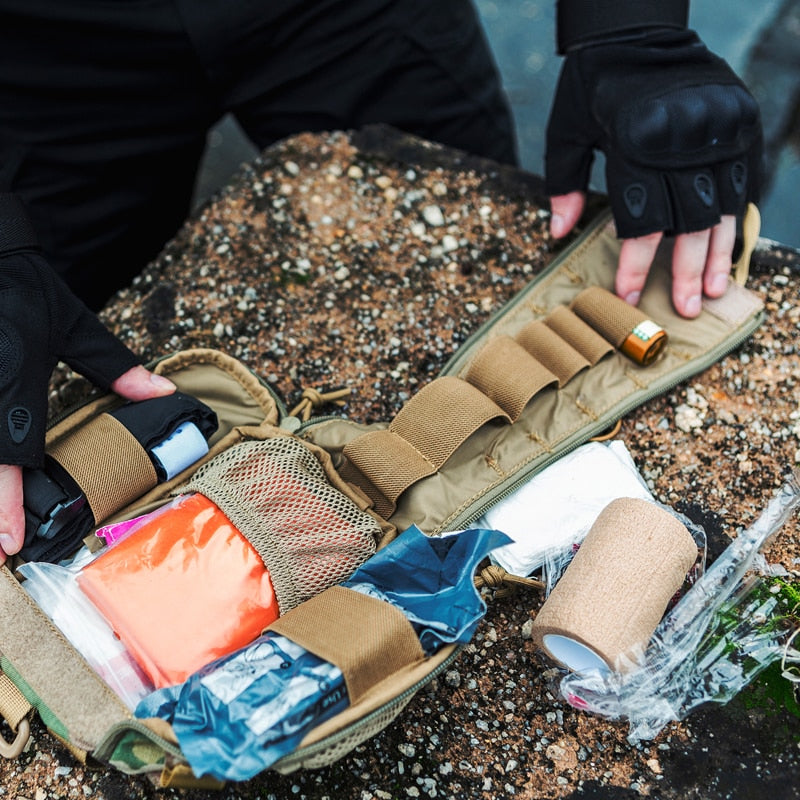ALWAYS PREPARED TO SAVE A LIFE
-
TOURIQUET APPLICATION
Tactical Field Care: Expose injury and apply directly to the skin 2-3 inches above the bleeding site. If bleeding is not controlled with the first tourniquet, apply a second tourniquet side-by-side with the first. Mark in a visible place the time the touraquet was applied. Always reassess tourniquet after moving injured person.
PACKING A WOUND
For compressible hemorrhaging not amenable to limb tourniquet use Combat Gauze or hemostatic dressing of choice. Pack towards the heart and hold pressure for AT LEAST 3 minutes.
-
AIRWAY MANAGEMENT
Conscious casualty with no airway problem identified:
- No airway intervention requiredUnconscious casualty without airway obstruction:
- Place casualty in the recoveray position
- Chin lift or jaw thrust
- If no severe head injury present nasopharyngeal airwayCasualty with airway obstruction or impending airway obstruction
- Allow a conscious casualty to assume any position that best protects the airway. A possible position could be sitting up and/or leaning forward.
- Use a chin lift or jaw thrust maneuver.
- Use suction if available and appropriate. -
RESPIRATORY
Suspect a tension pneumothorax and treat when a casualty has significant trauma or primary blast injury:
- Severe or progressive respiratory distress
- Severe or progressive tachypnea
- Absent or decreased breath sounds on one side of the chest
- Hemoglobin oxygen saturation < 90% on pulse oximetryIf the casualty has a chest seal in place, burp or remove the chest seal.
Establish pulse oximetry monitoring.
Place the casualty in the supine or recovery position unless he or she is conscious and needs to sit up to help keep the airway clear as a result of maxillofacial trauma.
Decompress the chest on the side of the injury with a 14-gauge or a 10-gauge, 3.25-inch needle/catheter unit.
Either the 5th intercostal space (ICS) in the anterior axillary line (AAL) or the 2nd ICS in the mid-clavicular line (MCL) may be used for needle decompression (NDC.)
-
CONVERTING TOURIQUETS
Expose the wound and determine if a tourniquet is needed. If it is needed, replace any limb tourniquet placed over the uniform with one applied directly to the skin 2-3 inches above the bleeding site. Ensure that bleeding is stopped. If there is no traumatic amputation, a distal pulse should be checked. then remove the tourniquet and note time of removal.
Take early and aggressive steps to prevent further body heat loss and add external heat when possible for both trauma and severely burned casualties.

